
The Science Academy: Guinness World Record Contender?
by Desmond Devine
Is Our School the Smartest?
Believe it or not, our school has been nominated for a new Guinness World Record, which will be recorded for the 2024 Guinness World Records and released in September 2023! The record in question is the “Smartest School” designation, awarded for a number of factors such as GPA, test scores, and the relative difficulty of the curriculum. If our school wins the award, it will receive a grant of $100,000 or more, and, as discussed in the last Coffee with the Principal, our school is making big plans with what to do with a hundred grand.
The beginning of the next school year marks five years of sharing a campus with East Valley, so we are going to go big. Many events are planned for next year, and our campus could undergo major renovations. As our ASB President Zahra R. states, “Our school has plenty of fun events and the like, but I think we deserve more for our test scores. [This award] will also benefit the East Valley students so that makes it especially important for our school.” I couldn’t agree more. ASB and the last CWtP have given me insight into the specifics of these ideas, which I will highlight in this article. All plans are subject to change, although there is a chance that this cash will be mainly set aside for our ever-growing Robotics Team and Porto’s pastries for the teachers.
Bringing back the Vending Machines
Newer students most likely have never heard of this, but our school used to have two vending machines near our stairwell. They had the traditional junk food and beverages in stock, and could be accessed by faculty and students at any time. These were only present during the 2019-2020 school year, and left quickly for a variety of reasons. They broke down often, were sometimes broken into by students after hours, and provided students with unhealthy snacks. However, all of these problems will be addressed if the reliable machines make a return next year. They will be given lithium batteries from the robotics lab for extra long battery life, and will be secured in solid titanium cages, which will be locked at night and monitored during the day. Our school could possibly hire guard dogs devoted to protecting the machines, but unfortunately they would probably get some of our snacks as payment. To keep students from stockpiling Cheetos and other unhealthy choices, the vending machines will be stocked with fresh meals from our cafeteria cut into little pieces. Ever wanted a quarter-quarter pounder to nosh on during a long Chemistry lecture? Now you can, but don’t heat up your food with a bunsen burner!
traditional junk food and beverages in stock, and could be accessed by faculty and students at any time. These were only present during the 2019-2020 school year, and left quickly for a variety of reasons. They broke down often, were sometimes broken into by students after hours, and provided students with unhealthy snacks. However, all of these problems will be addressed if the reliable machines make a return next year. They will be given lithium batteries from the robotics lab for extra long battery life, and will be secured in solid titanium cages, which will be locked at night and monitored during the day. Our school could possibly hire guard dogs devoted to protecting the machines, but unfortunately they would probably get some of our snacks as payment. To keep students from stockpiling Cheetos and other unhealthy choices, the vending machines will be stocked with fresh meals from our cafeteria cut into little pieces. Ever wanted a quarter-quarter pounder to nosh on during a long Chemistry lecture? Now you can, but don’t heat up your food with a bunsen burner!
New Sports Teams
One of the plans with the hoped-for $100,000 from the Guinness World Records is that one of the baseball diamonds will be removed to make room for new Pickleball courts. While this decision will probably face opposition, ASB looks at the positives: “Pickleball is trendy so lots of people would be interested, just about everyone can play it, and also the skill floor is incredibly low. It would be good to finally have a winning team,” says Vice President and esteemed Pickleball fan Jasper M. ASB will also look into purchasing giant fans to simulate the windy conditions so often noticed in Pickleball games.
In addition to Pickleball, other future sports teams to be founded include teams devoted to Lacrosse, Croquet, Curling, and Boxing. Lacrosse and Croquet will occur on the PE field as expected and a Boxing Ring will be installed for the gymnasium, but where will Curling occur? A glance at ASB’s wish.com search history across multiple Chromebooks shows that they have been looking at kiddie pools and walk-in freezers… not a promising start, but keep up the good work and we might soon have a proper curling arena!
Curling, and Boxing. Lacrosse and Croquet will occur on the PE field as expected and a Boxing Ring will be installed for the gymnasium, but where will Curling occur? A glance at ASB’s wish.com search history across multiple Chromebooks shows that they have been looking at kiddie pools and walk-in freezers… not a promising start, but keep up the good work and we might soon have a proper curling arena!
Weekly STEM Talks and Monthly Events
STEM talks were a highly requested event during the 2020-2021 school year and they remain popular this year, so The Science Academy is upping the ante. Every Tuesday, during 7th Period and the teacher’s weekly meeting, students will enjoy a STEM talk from 2:40 to 3:40 from a variety of professionals sharing their expertise from their respective fields, which will be filmed and broadcast on our own television channel: STEMCast.
The success of Pi Day and other carnival events has been noted, and so the Guinness influx of cash will allow for events like this to take place every month with an extended lunch, which all our teachers will greatly appreciate, especially those preparing for our AP exams. All events will offer fun games, purchasable food, and an incredible music selection, but all students have to pay $20 to attend the extended lunch or spend the 90 minutes in study hall. The events, by month, will be:

- August, beginning of school year: Back to School festival (+ Back to School Grams)
- September, Friday before Labor Day: Labor Day celebration (+ Labor Union Grams)
- End of October: Halloween Fear Fest (+ Spooky Grams)
- November, before Thanksgiving Break: Harvest Festival (+ Gratitude Grams)
- December, before Winter Break: Holiday Celebration (+ Winter Grams)
- January, first week of school: New Year’s Party (+ Resolution Grams)
- February, Valentine’s Day: Love & Kindness festival (+ Valentine Grams)
- March, Pi Day: Guess (+ Lucky Grams for St. Patrick’s Day)
- April, Tax Day: Finance Festival (+ Money Grams)
- May, after AP Exams: AP Exam Completion Celebration (+ We’re out of Ideas Grams)
- June, last week of school: Summer Festival (+ Graduation Grams)
- And in July, come to school for the massive Independence Day Fireworks Show and print out 4th of July Grams for your parents!
A Helipad?!
One of the biggest planned additions to the school is a helipad, which will make student life better in a variety of ways. Computer Science students who have played on Mr. Bradfield’s flight simulator will be excited to try the real thing, and a helicopter would be beneficial for Physics students studying principles such as wind resistance–hey, maybe the Pickleball fans could help with that! It would also be useful for police officers and fire departments that utilize helicopters, so our school would be better prepared in case of an emergency.

Where would a helipad go, however? The most popular option would be paving over the grass circle in front of the Northwest building, which students aren’t allowed to walk over anyway. Another choice is the parking lot/basketball court, but a helicopter could get in the way on the days when it’s used. A helicopter could get parked on the roof of the Northwest building, but that roof isn’t really made for one. A helipad at our school would improve things greatly and would give us huge bragging rights, but the effort may cost more than the outcome.
An Extra Day Off
All students, starting this year, will get April Fool’s Day off to ensure that no dastardly pranks are pulled at school. If April 1st falls on a weekend or during a break, students will get the Friday before off. For this year, students will get an extra-long break because of this new added holiday off, although students will have to work for an extra week in June to make up for the time lost.
Conclusion
If you are confused about any of these changes, make sure to ask your grade representative, a Sci-Fi or staff member, or better yet, remember the article I wrote a year ago around this time:
(click link)
https://www.thescienceacademystemmagnet.org/2022/04/01/a-doorman-for-the-science-academy/
This semester is about halfway over, and Mr. Lauchu is counting on you to help win the Guinness World Record for Smartest School. So work as hard as you can and have a great (extra long) Spring Break!
Read More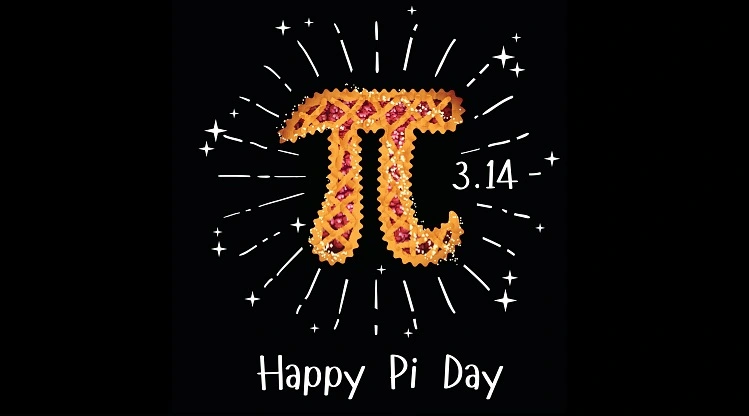
Pi Day Fun!
by Jordin Lim
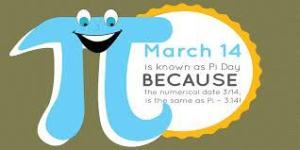 Pi Day, celebrated March 14, is the celebration of mathematical constant 𝝅, due to its numerical date (3.14) representing the first three digits of pi.
Pi Day, celebrated March 14, is the celebration of mathematical constant 𝝅, due to its numerical date (3.14) representing the first three digits of pi.
Fun fact: Pi Day also happens to be Albert Einstein’s birthday
Physicist Larry Shaw, who found Pi Day in 1988, had the first Pi Day celebration at his place of work, the Exploratorium, a San Francisco-based interactive science museum. However, Pi Day was not deemed a national holiday until 2009, after the U.S. House of Representatives passed legislation making it one.
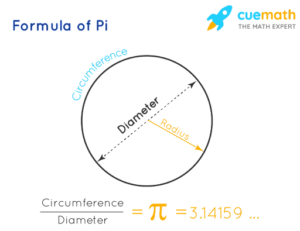 Pi Info
Pi Info
Although our Science Academy students are more than well-acquainted with pi, it is still useful to note what it is and its significance in everyday life.
What is pi?
Ancient Greek mathematician Archimedes is most commonly credited to be the first to accurately calculate the approximate value of pi. In mathematics, pi is the constant ratio of a circle’s circumference to its diameter, regardless of its size.
Fun fact: The word “pi” itself is derived from the first letter of the Greek word perimetros, meaning circumference.
What is the significance of pi?
Although you may not find yourself using pi every day, pi is used in many calculations for buildings and construction, engineering, and many other fields. In addition, NASA regularly uses pi to calculate trajectories of spacecraft. Not only that, but pi gives us a reason to feast on pie every March 14, although who really needs a reason to eat pie any day of the year?
Pi Day Festival
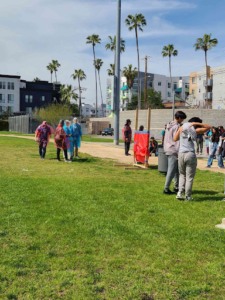 On March 17, Science Academy held our infamous Pi Day Festival, which had to be delayed to the new date due to rain on March 14. This festival consisted of many fun activities and carnival games, including ring toss, pie eating contests, and even throwing whipped cream pies at the teachers! (I saw a catapult at this event, and I hope it was used) In addition, there were other booths selling refreshments and giving students their pre-ordered pizzas.
On March 17, Science Academy held our infamous Pi Day Festival, which had to be delayed to the new date due to rain on March 14. This festival consisted of many fun activities and carnival games, including ring toss, pie eating contests, and even throwing whipped cream pies at the teachers! (I saw a catapult at this event, and I hope it was used) In addition, there were other booths selling refreshments and giving students their pre-ordered pizzas.
The prizes given out at the carnival games were quite great – many people entered their class after lunch bearing multitudes of stuffed animals – I personally won two lollipops myself.
I hear the Pi Day Festival is a fan favorite among the student body, so I can’t wait to see it again next year!
Photo Gallery
 .
. 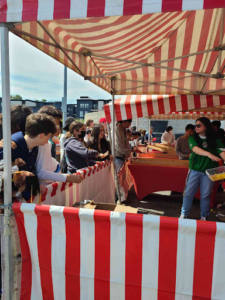
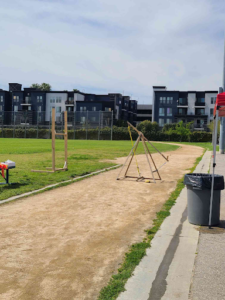
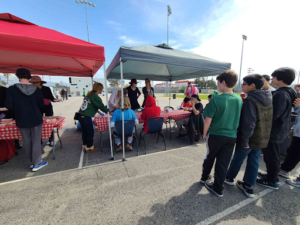

Read More

8th Grade Science Fair Interviews
by Ryan Park
For Science Academy’s 2022-2023 Science Fair, I interviewed two 8th graders to learn more about their projects: Dani Tsao, 1st place winner, and Aspen Chung, 2nd place winner.
* Dani Tsao’s Science Fair project built on her experiment from last year in creating a new type of solar panel.
What inspired you to choose your Science Fair topic?
My experiment this year is a continuation of last year’s project. I first thought of my idea when I was driving around my neighborhood and realized that there are mainly two types of solar panels: a) those that create electricity, and b) those that heat up water. When I saw this, I thought “Why can’t there be a solar panel to do both?”
What experiment did you do? What were your hypothesis and results?
With the above question in mind, I combined an electricity-generating and a water-heating solar system. Although the solar panel efficiency increased, I have thought of another idea for further improvement.
This year, I decided to make a control system that rotates the solar panel so that it always faces the sun. My results showed that this new solar panel design, combined with improved thermal insulation, increased the electricity-generating efficiency as well as heated up the water more. Compared to the original solar panel idea, this new design increased the energy capture efficiency by 25 – 30%.
Is there anything you’d like to say about receiving 1st place in your grade level?
I am very appreciative of this project because it allowed me to use the information I learned in Mr. Bradfield’s class about Arduinos and soldering. The award gives me a lot of satisfaction, but I think there are still more problems to be solved.
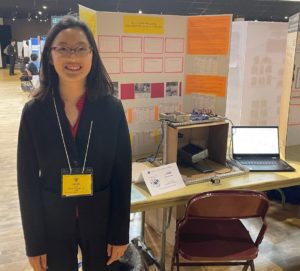
Dani at the L.A. County Science Fair
______________________________________________________________________________________________________
* Aspen Chung’s Science Fair project was about the growing danger of climate change and her method of using cleaner alternatives to carbon fossil fuels.
What inspired you to choose your Science Fair topic?
Our world is powered by fuel, ranging from transportation to heating to factories that produce many of the goods used in our daily lives. However, many of the non-green fuels that are commonly used contribute to climate change through carbon dioxide emissions, a greenhouse gas that is damaging our ozone layer. And in a world that is aiming to become greener, I believe it’s important to explore cleaner alternatives for fuel, such as hydrogen gas, which only emits water vapor as a byproduct.
What experiment did you do? What were your hypothesis and results?
My project focuses on finding the most effective way to produce hydrogen gas, which acts as a clean fuel source, through electrolysis. I varied the amounts of magnesium sulfate between 20 grams, 45 grams, and 75 grams to test how it affected the rate of electrolysis and the change in pH. I hypothesized that if the water has more magnesium sulfate, then the rate of electrolysis will be faster and the pH will change quickly. My hypothesis was proven correct through my experiment, where 75 grams of magnesium sulfate produced the fastest-changing pH, demonstrating a more efficient rate of electrolysis.

Aspen’s Science Fair Board
Read More7th Grade Science Fair Interviews
by Liz Zarikyan
This year’s Science Fair, which took place February 6-8th, was a showcase of projects from 7th and 8th grade students that uncovered mysteries, revealed solutions to some of our world problems, and even provided resources to use in case of emergency. I interviewed some of the 7th grade winners to find out more about their projects.
Jordan R. – Honorable Mention – 7th grade
What was the title of your project? 
The Effects of Proteinase K on the Biodegradation of Plastic
Why did you choose to do this project?
I was interested in finding a way to safely degrade plastic because I’ve seen plastic pollution and have wondered how that problem could be solved. Only around 9 percent of plastic is recycled so I started my research to see if there was any way to eliminate it. I thought this method was a good option for dealing with the problem, and Proteinase K got my attention due to its ability to degrade the polymers in plastic. The surrounding soil is used through the existing microbes that consume the lactic acids which are created when the polymer is broken down by the enzyme.
Did you have any complications when working on your project?
It was hard to find proteinase K, which is an enzyme used in molecular biology. It was hard to find because it’s not an item that’s bought on a day-to-day basis, making it less available. I didn’t consider purchasing other enzymes because I researched other “digestive” enzymes such as lipase and I found that they would not be effective on plastic. I originally tried to obtain the enzyme from BLIRT, which is the primary European manufacturer of recombinant enzymes, but after applying for an offer and not getting a response, I searched for other suppliers and was then able to purchase it on eBay.


What was your process?
I tested the effects of the enzyme on the plastic by embedding the different amounts (0 mg, 10 mg, 40 mg) into 50 g of soil and then using that to cover plastic disks that came from disposable food containers. After 2 weeks of putting these out in the sun, I used Image J, which is a Java-based image processing program that provides the function of calculating the surface area within an image.
What were your results?
Proteinase K helps biodegrade plastic by a decent amount. 40 mg of Proteinase K was able to lower the surface area of plastic by over 8% in just 2 weeks.
If you could do this experiment again, what would you change?
I would run more trials because I want to test out increasing the amount of enzyme and/or composting time period.
What was the best part of your experiment?
The best part of the experiment was seeing how the plastic had degraded. I was interested to see how the experiment would turn out and was happy that it worked.
Paria V. & Kayla A. – tied for 1st place – 7th grade

What was the title of your project?
“Water on the Go: Creating an Emergency Water Filter”
Why did you choose to do this project?
We set out to create a water filter that could be used while hiking with available water, so we wanted to find out how much cleaner you can make dirty water through a mechanical process. Also, there is a shortage of clean water around the world due to natural disasters and human-orientated events, and this process could possibly allow for places around the world to have drinkable water.
What were your results?
We measured our results using a TDS meter. The TDS meter measures parts per million (PPM) of dissolved sediments in a substance. In our first trial, we had a starting PPM of 311 and a resulting PPM of 273. In our second trial, the starting PPM was 357, and it resulted as a PPM of 303. In our third trial, we started with a very high PPM of 493, which is close to the highest contaminant level and highly dangerous to consume. The resulting PPM was 343, which was a very significant change. It brought water with an almost max contaminant level down to the same PPM as tap water.
What was the best part of your experiment?
The best part was testing each layer before putting it in the filter to see how it would filter dirty water on its own. The layers we used were two pieces of foam on each end, then a starting layer of charcoal, then sand, then small rocks, and lastly, a final layer of charcoal. These layers were separated by a small layer of straining fabric so they wouldn’t mix. We decided to add another layer of charcoal, because we found that it was the best filtering factor. Something interesting we found was that when you pour water onto activated charcoal, at first it will sizzle and bubble. Afterwards, the water started to run clear, showing that the charcoal did a lot of the work. The activated charcoal strips out the toxins and odors in the water. The sand and rocks removed the larger sediments before reaching the last layer of charcoal.
 What was the process after you figured out your layers?
What was the process after you figured out your layers?
We drilled a hole into the cap of a bottle and cut the bottom off. We then sealed a coupling into the drilled hole with waterproof silicon to ensure it wouldn’t leak. Next, we attached tubing from the coupling to the main filter and in the middle placed a valve. The valve starts and stops the water flow. This part of the mechanism does not affect the results of the filter, but it does make the filter easier to use.
Did you have any complications when working on your project?
It was hard to drill a hole in the bottle cap, and it was hard to get the cloth pieces in the tube. We also had an unexpected trial when testing our filter when the PPM actually increased, meaning the water got dirtier. This was a result of us not compressing the layer enough, so the sediments got stuck in between the layers.
If you could do this experiment again, what would you change?
To improve our project we could add either a solar panel pump or a hand pump. This is because our filter was a bit slow because of the many thick layers. This would pump in the water, making it faster and more convenient. A hand pump would be added in case a large amount of clean water is needed in a short amount of time. We could also add a stand because it took two hands to hold the filter. If a stand is added, then the filter would be completely automatic and convenient. These add-ons are not necessary for the filter to work in case of an emergency, but they would be very helpful.


Final filtration process

Illustration of how solar power could be used to power water filtration on a larger scale
Read More
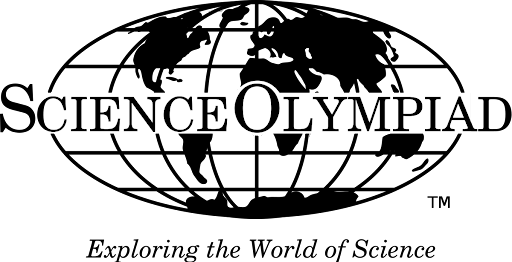
Science Olympiad
by Tarisha Hasan
What is the Science Olympiad?
Science Olympiad is the premier team STEM competition in the nation, providing standards-based challenges to 6,000 teams at 425 tournaments in all 50 states. Science Olympiad competitions are like academic track meets, consisting of a series of 23 team events in each division (Division B is middle school; Division C is high school). Each year, a portion of the events are rotated to focus on genetics, earth science, chemistry, anatomy, physics, geology, mechanical engineering and technology. By combining events from all disciplines, Science Olympiad encourages a wide cross-section of students to get involved.
The competition is divided into several events, which vary every year. It is designed to test science knowledge in various ways, including (but not limited to) scientific design, tests, and build events. Certain events are more time-consuming and intensive than others: for example, Rollercoaster, where you build a stylized ramp for a ball to roll down for a target time, and Flight, in which teams build a rubber-band powered airplane vs. an event like Fast Facts, which is more a test-based “core knowledge” event. The more events your team participates in and the more events you finish in the top three places, the higher your team’s ranking.
Regional competitions typically involve schools from a specific region, usually within the same state. Our State competition takes students from schools all over California, and Nationals will likely involve teams from every single state in the United States. The experience is highly rewarding, and it can be a valuable addition on applications one may have for colleges, internships, and future jobs. With that in mind, I want to provide a thorough review of this year’s competition so that students can get a better idea of what the competition entails. Before we get started, I would like to thank and congratulate all participants in this year’s Science Olympiad competition from both Division B (middle school) and Division C (high school).
What happened on this year’s trip?
The competition this year took place at Antelope Valley College, which is about an hour northeast from the Science Academy/EVHS campus. Both Divisions B and C camped outside of Yoshida Hall to gather, prep, and give each other support. Most events (except for Green Generation B/C, Dynamic Planet B/C, Roller Coaster B, It’s About Time C, Flight B/C, Storm the Castle B, Trajectory C, Wifi Lab C, and Sounds of Music B) took place in either Uhazy Hall (UH) or Sage Hall (SH). It was quite a large campus, so all participants were provided with maps in order to navigate the competition properly. Very few events this year seemed to be available to both the middle and high school divisions, with most events being exclusive to one division or another.
Although Antelope Valley College might not be that well known to students, it was nevertheless a huge campus, making it very easy to get lost, so we found that it’s always important to leave yourself plenty of time to get to your events. The college buildings contained many fascinating things, such as an anthropology exhibit, professional lecture halls, and well-equipped chemistry labs, so between events, we definitely did some sightseeing.

Image #1: Map of the Antelope Valley Campus
Personal experience
Because of the events I selected, my first event wasn’t until the afternoon at 1:20 pm. Luckily, the vending machines worked fine, and the snacks that we brought on the trip were also decent, which gave me an excuse to try matcha-flavored Choco Pies for the first time.
One of my first events was the Write It, Do It event, which is both fun and a bit nerve-wracking. Teammates are placed in separate rooms; one teammate writes down instructions for building an unnamed and unpictured item, and the other has to correctly build it. Although I will admit I’m not the best architect in the world, I still think I did a pretty decent job building the compound object from my teammate’s instructions. The materials were pretty fun to fidget with and link together, and the wooden blocks made almost perfect Jenga pieces. Even then, when the time came to build the actual object, it reminded me of trying to follow a recipe shoved into Google Translate multiple times before being translated back into English.
Fast Facts, a core knowledge test event, which was overall a pretty successful event for us, had some name categories that were challenging, including parts of the brain and anatomy. Unfortunately, I completely bombed the Biotechnology category, so those are areas I’ll want to study more in the future.
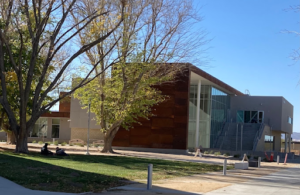
Image #2: Sage Hall, where I did the Write It, Do It event.
Why should you participate in Science Olympiad?
Despite the rigor that the competition has, it is well worth the effort. Not only is it fun, but participation in the event, even if you don’t place at the top or even the top three, will look excellent on a college application. These days, colleges look for students who are well rounded and capable of a high level of endurance in times of difficulty. Participants in the competition have the potential to win huge prizes: not just trophies, medals and plaques, but also scholarships, which can make going to college a lot more economically feasible. This, in turn, can allow you to pursue the career you want, especially if it’s a STEM career. If you’re interested, you should talk to Mr. Nuno and join his Per. 7 Science Olympiad elective next year.
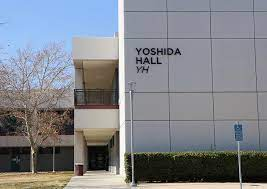
Image #3: Yoshida Hall. Most of us camped out near the entrance of this place, more precisely, near the tree shown at the left of the hall
Science Olympiad Trivia
- The first recorded Science Olympiad competition was held on Saturday, November 23, 1974 in Laurinburg, North Carolina at St. Andrew’s Presbyterian College.
- The list of events changes every year, but the core categories remain the same: Core Knowledge, Build, and Hands-On. Hybrid events can be a combination of any of these categories.
- And finally, a word of advice:
- If this is your first Science Olympiad competition, I would highly recommend selecting an event that is Core Knowledge only; these events only require research in order to completely understand the requirements.
- If you are good at building, you may want to take on Build events. They are rewarding to design and often come in the form of models of practical everyday objects. However, these events can be time-consuming, so take them as early as possible.

Changes Coming to LAUSD Cafeterias
by Anaelle Tadros
During lunchtime, there’s always a line in front of the cafeteria. Some people enjoy the food and others hate it, but we can all agree that the cafeteria is a good resource when you’re hungry and don’t have anything to eat. Although the cafeteria has its fair share of good and bad days when it comes to food, satisfaction really depends on the taste buds of those eating the menu items. Compared to the past, the cafeteria food offered by LAUSD has actually improved quite a bit over the years. There used to be less of a variety of foods, and they often served warmed up foods in their plastic casings. Several years ago, the district upgraded their menu and really made an effort to serve healthier food and to have more fresh food options. However, not every student has appreciated the changes so now the district is trying to tackle the issue of food appeal in addition to serving healthier items. As of 2022, LAUSD is experimenting with new food choices. According to a source, the district brought in about 30 students in the summer of 2022 to try out some new menu items in an effort to have more choices that the students will eat and enjoy while also keeping it nutritious. Some of the new food items that have been added to their menu are smoothies (which we first saw at the end of last semester), chicken rice and bean bowls, mac ‘n’ cheese, kung pao chicken, nachos, and even different types of cookies.
Aside from the new variety of foods and the fresher appearance, the school district is starting to come up with food options that are flexible for certain dietary restrictions. This means that LAUSD is finally coming up with daily menu options that are good for vegetarians, vegans, and lactose-intolerant people. According to one student, “The cafeteria only [recognizes dietary restrictions] sometimes, and for some religions or cultures.” For example, there are meatless Mondays and fish and salads, but items such as these have not been available every day. They are also planning on expanding their ethnic food offerings by bringing more diverse cuisines from multiple cultures into their menus.
Students at the Science Academy STEM Magnet were surveyed to see what their favorite foods were, along with their opinions on our school’s cafeteria system and how it may be improved. Most of the students believe that the cafeteria system should allow students to choose what they want to eat instead of being told what to choose and feel that this could improve the system because then the food could be given to students who actually want to eat it rather than it just being thrown in the trash can at the end. Some of our students’ favorites are hot dogs, chicken nuggets, chicken sandwiches, nachos, salads, and chicken rice and bean bowls. Hopefully, we will soon see more expanded options at our cafeteria!

Student Feedback Surveys
Multiple students participated in student surveys about the cafeteria food, they were asked:
- Is the food at the cafeteria good or bad? What specifically about it is good or bad?
- What are some of their best dishes?
- In what ways could the cafeteria improve its food?
- Does the cafeteria food show cultural awareness? (for example, for religions that cannot eat animal products at certain times, does the cafeteria have other choices that those people can eat?)
Here are some notable answers given by a few of the surveys:
Name: Anonymous
- What are some of their best dishes?
- “Hot dog and the dish that has chicken rice and beans.”
- In what ways could the cafeteria improve its food?
- “Better rice, they could allow the students to pick what they want instead of choosing for them.”
Name: Anonymous
- In what ways could the cafeteria improve its food?
- “The facility within the parameters of the Science Academy STEM Magnet that serves dishes could build onto their low success by giving [people] the ability to choose item of their preference.”
Name: Anonymous
- Is the food at the cafeteria good or bad?
- “It is mostly bad because the food isn’t fresh and it serves milk instead of water.”
- In what ways could the cafeteria improve its food?
- “Don’t force children to get something they aren’t going to eat, therefore giving more food to the people who want it.”
- Does the cafeteria food show cultural awareness?
- “The cafeteria only does this sometimes and for some religions/cultures. There are meatless Mondays and fish, and salads, but not everyday.”
Amongst the surveys, hot dogs were a favorite. Otherwise, many students wished for more variety and stated the cafeteria’s cultural awareness could improve, but the menu is definitely considerate of certain groups’ nutritional rules. A possible enhancement of cafeteria food would be to allow students to have more of a choice in the school’s menu as to avoid wasting food or dissatisfaction.
Sources
LAUSD students get to taste test new cafeteria food – Daily News
Read More


